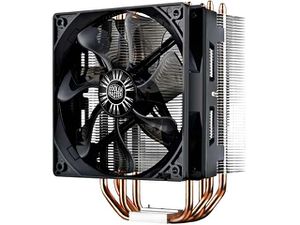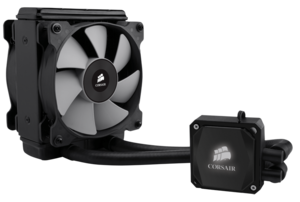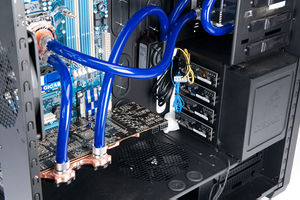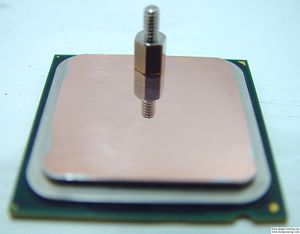We are still actively working on the spam issue.
Computer cooling
Computer Cooling keeps your computer and parts from overheating and staying within appropriate operating temperatures. The most common parts of a computer cooling system include fans, heat sinks, and water cooling systems. There are also ways to help improve cooling, such as using thermally conductive compounds, cpu and heat sink lapping, and de-lidding.
Contents
Computer Fans
Computer fans come in many different shapes and sizes. Although there are fans that are larger and smaller, some of the most commonly used sizes are 120mm and 140mm.
Heat Sinks
Heat sinks help dissipate heat from components. They work by increasing the surface area that heat can dissipate through, usually by having heat travel through heat pipes and then dissipating through multiple fans. To increase this effect, most heat sinks use fans to push air through to remove the heat.
Water Cooling
For the most part, water cooling is a meme. A good enough fan is almost always going to be enough to cool down your computer, and is much cheaper as well as quieter. Most water cooling is marketed just to look impressive and so people can say things like "look I have colored water cooling that matches my light up mousemat". For ordinary desktop PCs, water cooling is just not worth the money, and not to mention you also run the risk of potentially destroying your computer. The only time water cooling is ever recommended is usually for super hot machines (like supercomputers) where keeping the temperature extremely low is a priority, but even then in most cases they just get more powerful fans.
There are two types of water cooling systems for computers. The first type are closed loop coolers (CLC). CLC coolers are the water coolers that come as a single, pre-made unit. The parts of this unit are the pump, which pushes water through the loop, the radiator, which is responsible for cooling down the water, and the water block, which makes contact with what the cooler is supposed to remove heat from.
The second type of water cooling system is a custom loop. As the name suggests, this is a cooling solution that does not come pre-made, and requires some assembly. The parts of this type of system are very similar, except for the fact that many of them are not in one package, as on a clc. There are several advantages to a custom loop, such as the ability to have multiple cooling blocks being attached to one radiator, and not having use multiple clc units.
Thermal Paste
Thermal Paste is the material that you put in between the heat sink and the surface being cooled. Thermal paste is supposed to fill in any gaps in between the two surfaces. The proper way to apply thermal paste is widely and fiercely debated by many people, but the general consensus is that the best method for normal applications is to place a rice grain sized dot on the CPU, and then press down on it with the heat sink to prevent air bubbles. Visit http://www.arcticsilver.com/methods.html for specific instructions for your CPU.
Enhancements
There are many ways that one can improve cooling of their CPU and/or GPU. These include heat sink and CPU lapping, and CPU de-lidding. Please note that many of these enhancements do void your warranty, and can potentially destroy the item that you are trying to modify. We are not responsible for anything that happens if you choose to do any of these enhancements.
Lapping
Lapping refers to sanding down a heat sink or CPU heat spreader to a flat, shiny surface. This is done by sanding down the the heat sink or heat spreader, starting off with a large grit and then ending it off with a very fine one.
De-lidding
Many new Intel processors (ivy-bridge and Haswell) use standard thermal paste under their heat spreaders instead of the previously used material. There are several methods of doing this, such as the vise method and razor blade method. The vise method involves putting the cpu into a vise with the heat spreader down, and then placing a block in front of it and gently tapping the block with a mallet until the heat spreader comes off. The razor blade method involves getting a razor blade underneath the heat spreader, and then slowly separating the adhesive holding on the heat spreader to the CPU.



